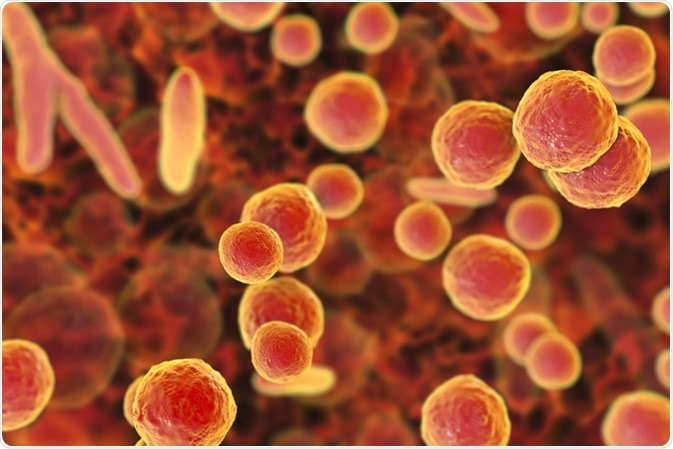Diagnosis of Genital Mycoplasmas

Members of the genus Mycoplasma under the class Mollicutes are parasitic bacteria that are omnipresent in nature. They are significant causes of mucosal infection in humans, and species that are linked to urogenital tract pathology are known under the group designation “genital mycoplasmas”.
Genital mycoplasmas have been implicated in urethritis, cervicitis, pelvic inflammatory disease, puerperal infections, low birth weight, septic abortions, as well as spontaneous abortion incidents and infertility. Therefore timely and unequivocal diagnosis is pivotal and requires the application of special methods.

Culture Techniques
Culture is still the most widely employed method for detecting and identifying genital mycoplasmas in clinical specimens. For this reason it is regarded as the “gold standard”. The relative speed of their growth in culture allows detection and presumptive identification of these microorganisms within 2-5 days.
However, this test has a low sensitivity when compared to molecular tests (such as polymerase chain reaction or PCR) which has been repeatedly reported in the literature. Also, the quest for an experienced laboratory that performs this technique on a regular basis is not always easy, which is further compounded by the need for proper specimen transport to preserve the viability of the organisms, and the fact that the method is labor-intensive.
The advent of commercially available assays based on liquid broth cultures facilitates the entire culture process, which is why they are considered more user-friendly than conventional culture methods. Such enriched liquid broths contain arginine, urea and phenol red indicator, and are observed for eventual color changes; they also allow subcultures to be taken on to solid media with subsequent recovery and identification of both Ureaplasma urealyticum and Mycoplasma hominis.
The culture of Mycoplasma genitalium is even more cumbersome and time-consuming, with no liquid broth culture method available currently. Thus the cultivation of this mycoplasma is pursued only for research purposes. All these drawbacks significantly hinder the possibility for antimicrobial sensitivity testing of genital mycoplasmas.
Molecular Methods
Molecular methods (i.e. nucleic acid amplification assays, and particularly PCR) have been described for all genital mycoplasmas that are known to play a role in human pathology. Still, as PCR detection of mycoplasmas is still too expensive, labor-intensive and complex for routine use, most diagnostic laboratories do not have it in their diagnostic arsenal.
In practice, PCR and other molecular methods are less valuable for the routine diagnosis of easily cultivable and more rapidly growing genital mycoplasmas (such as Mycoplasma hominis and Ureaplasma urealyticum), except in cases when culturing could prove difficult, such as when dealing with fixed tissue samples.
On the other hand, when dealing with exceptionally fastidious species for which optimal cultivation techniques are not established (such as Mycoplasma genitalium), the use of PCR may be the only practical and reliable way to detect their presence. However, a large number of such assays are still pending FDA approval, and they are thus currently used mostly for research purposes.
Serologic assays
The ubiquitous presence of genital mycoplasmas in adults hampers the adequate interpretation of antibody titers, so the mere presence of specific antibodies cannot be considered a significant finding. Nonetheless, this type of diagnostic approach may be useful in infants with systemic infection caused by genital mycoplasmas or in women with pregnancy loss.
Serologic methods that have been developed for Ureaplasma urealyticum, Mycoplasma hominis and Mycoplasma genitalium include enzyme-linked immunoassays, indirect immunofluorescence assays, microimmunofluorescence, as well as metabolic inhibition tests. The LAMP-EIA assay (adapted by using two diverse strains of Mycoplasma genitalium as antigen) is currently being used in a plethora of serological evaluations of pelvic inflammatory disease (PID) and tubal disorders.
References
- http://cdn.intechopen.com/pdfs/37263.pdf
- https://www.ncbi.nlm.nih.gov/pubmed/4020782
- http://eknygos.lsmuni.lt/springer/599/271-288.pdf
- https://www.hindawi.com/journals/jpath/2014/183167/
- http://mmsl.cz/viCMS/soubory/pdf/MMSL_2013_4_1_WWW.pdf
- http://apps.who.int/iris/bitstream/10665/85343/1/9789241505840_eng.pdf
- Mendoza N, Ravanfar P, Shetty AK, Pellicane BL, Creed R, Goel S, Tyring SK. Genital Mycoplasma Infection. In: Gross G, Tyring SK, editors. Sexually Transmitted Infections and Sexually Transmitted Diseases. Springer Science & Business Media, 2011; pp. 197-202.
- Martin DH. Genital Mycoplasmas: Mycoplasma genitalium, Mycoplasma hominis and Ureaplasma Species. In: Bennett JE, Dolin R, Blaser MJ, editors. Mandell, Douglas, and Bennett's Principles and Practice of Infectious Diseases. Elsevier Health Sciences, 2015; pp. 2190-2193.
Further Reading
- All Mycoplasma Content
- What are Genital Mycoplasmas?
- Treatment of Genital Mycoplasmas
- Effects of Mycoplasma Contamination on Research
- Mycoplasma Detection and Prevention in Cell Cultures
Last Updated: Feb 27, 2019

Written by
Dr. Tomislav Meštrović
Dr. Tomislav Meštrović is a medical doctor (MD) with a Ph.D. in biomedical and health sciences, specialist in the field of clinical microbiology, and an Assistant Professor at Croatia's youngest university – University North. In addition to his interest in clinical, research and lecturing activities, his immense passion for medical writing and scientific communication goes back to his student days. He enjoys contributing back to the community. In his spare time, Tomislav is a movie buff and an avid traveler.
Source: Read Full Article